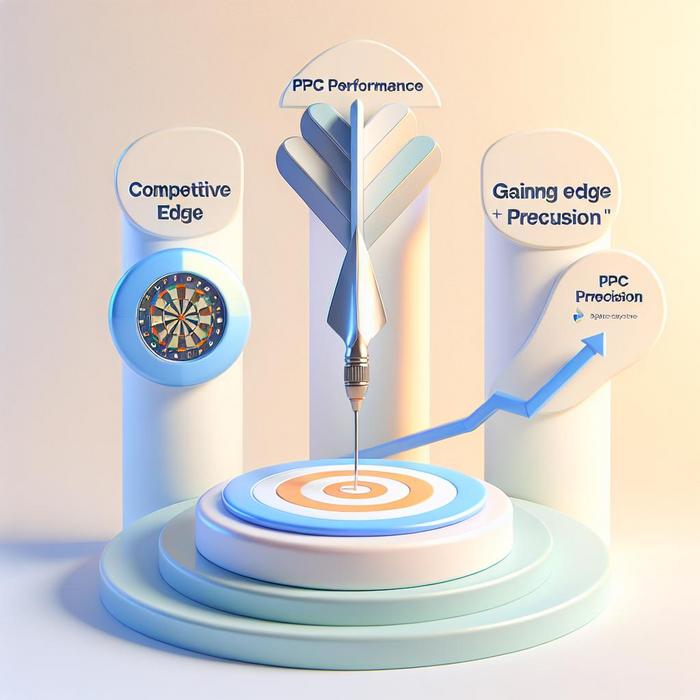Strategically Leveraging Ad Platforms: Google VS TikTok
Businesses must stay at the forefront of their industry by optimizing their targeting efficiency to gain a competitive advantage. Understanding ad performance on different platforms is key. So, let’s compare Google, the classic powerhouse, with its bold newcomer: TikTok.
Google Ads offers an unparalleled reach, boasting 246 million unique U.S. visitors, billions of them worldwide, and nearly 3.5 billion daily interactions. On the other hand, TikTok, though newer, has quickly gained popularity among younger audiences, with over 689 million active users across the world.
Leveraging the strengths of both platforms can enable executives to make carefully informed decisions, driving business growth. To illustrate, Google’s depth and breadth are ideal for comprehensive campaigns aimed at a broad audience. Conversely, TikTok’s dynamic, short-form content presents a unique opportunity to connect with younger demographics, often proving more engaging and sharable.
Applying Advertising Metrics to Maximize Revenue
The intelligent application of advertising metrics is at the heart of gaining a competitive edge. Data culled from ad performance can empower strategic decision-making, facilitating the efficient allocation of resources towards the most productive channels and formats.
For instance, leaders who masterfully harness metrics will be able to determine when investing in Google’s broader reach or TikTok’s higher engagement rates will yield the best return on investment for their specific campaign.
Using Artificial Intelligence for Competitive Advantage
Artificial intelligence (AI) is another powerful tool in achieving targeting efficiency.
In truth, AI’s capabilities extend far beyond efficiency. From predictive analytics to behavioral targeting, AI can enhance ad performance by delivering personalized content to your audience at the perfect moment. Embracing AI-enriched strategies can help companies discover new revenue streams, as detailed in this valuable resource.
Meta’s Role in Advancing Targeting Efficiency
Advances in targeting efficiency are not limited to Google and TikTok. Meta, formerly Facebook, offers a formidable advertising platform with robust targeting capabilities. Their vast user base, combined with extensive data collection, enables precise targeting, especially valuable for businesses operating in niche markets.
Like Google, Meta’s broad reach is a significant advantage. But Meta’s edge lies in its advanced audience segmentation, enabling advertisers to target finely-tuned user groups based on interests, behavior, and demographics. This tailored approach leads to more meaningful interactions, ultimately creating stronger connections, as highlighted in this post.
Reaping the Benefits of Competitive Advantage
Mastering these disruptive technologies and leveraging the unique strengths of various ad platforms will not only improve targeting efficiency and ad performance but also create a competitive advantage. This enhanced ability to connect with consumers and influence their purchasing decisions can optimize your marketing efforts, driving growth, and securing your position in the market.
The strategic implementation of these advanced techniques will prove vital for any business striving for success. Embrace these changes, adapt to the evolving landscape, and let the results speak for themselves.
Emerging Digital Powerhouse: How TikTok Challenges Google’s Dynamism
Businesses are consistently required to recalibrate their strategic approach, in essence, moving as fluidly as water to navigate the pathways of success. One area where this shift is very evident is in the rivalry playing out between two online advertising giants: Google and TikTok. Avant-garde businesses are constantly monitoring this rivalry, extracting the best from both platforms for maximum effectiveness.
Known for its cutting-edge technology and search engine supremacy, Google has been a staple choice among advertisers for years. It’s not just that Google covers the basic tenets of digital advertising – it also helps businesses traverse new horizons with its emphasis on location-based marketing and pay-per-click ads. For brands targeting a full spectrum audience, Google’s expansive reach and in-depth analytics provide an advantage.
Conversely, TikTok has emerged as a formidable contender, successful among younger demographics. Businesses on the hunt for trendier, more influencer-driven marketing strategies find TikTok extremely appealing.
Engaging Strategies & Winning Tactics
Proactive businesses understand that part of the key to victory is leveraging the unique opportunities that different platforms present. They know when to strike with Google’s laser-focused PPC strategies or engage the effervescence of TikTok’s viral marketing.
On the one hand, Google’s advanced AI technology allows advertisers to craft modernized, far-reaching, and targeted campaigns. On the other, TikTok’s unique presentation style cultivates a digital socio-cultural environment that sparks long-lasting relationships through viral content. For more details on leveraging and maximizing these strategies, this resource is worth exploring.
Tackling the Future of AI in Advertising
The inclusion of Artificial Intelligence in business has realized a distinct shift in our perceptions of advertising scalability and targeting efficiency. With fresh possibilities emerging daily, AI is molding the future of advertising by curating and sorting data unlike ever before, and guiding strategy decisions more efficiently.
From assessing consumer behavior patterns to predicting future trends, the implementation of AI in ad strategizing directs resources towards profitable avenues. It’s well-worth applying these AI-driven strategies across all platforms, such as Meta, Google, and TikTok to maximize their potential.
Unleashing the Power of Precise Targeting: Meta’s Mark
Speaking of Meta, despite the name change, Meta remains a game-changer in the social media advertising, boasting one of the most comprehensive audience networks across its platforms. It provides advertisers the tools to conduct finely-tuned audience segmentation. Businesses can create extremely targeted advertising, accessing users based on specific behaviors, demographics, and interests. This personalization engages potential customers at a significantly deeper level than typical blanket campaigns.
Harvesting the Fruits of Advanced Strategies
Having a solid grasp of these intricate technologies and leveraging the different strengths of diverse ad platforms improves efficiency and ad performance. Developing this compatibility can fuel company growth and robust market standing, giving businesses a much-needed upper hand in an ever-evolving digital world defined by change and fierce competition.
In conclusion, the deserve mention, although it’s crucial to note that a balanced, diversified digital marketing strategy is integral to meaningful growth and success. So go ahead, embrace these shifts, get comfortable with adaptability, and watch the miraculous transformation it brings to your digital advertising strategy.











